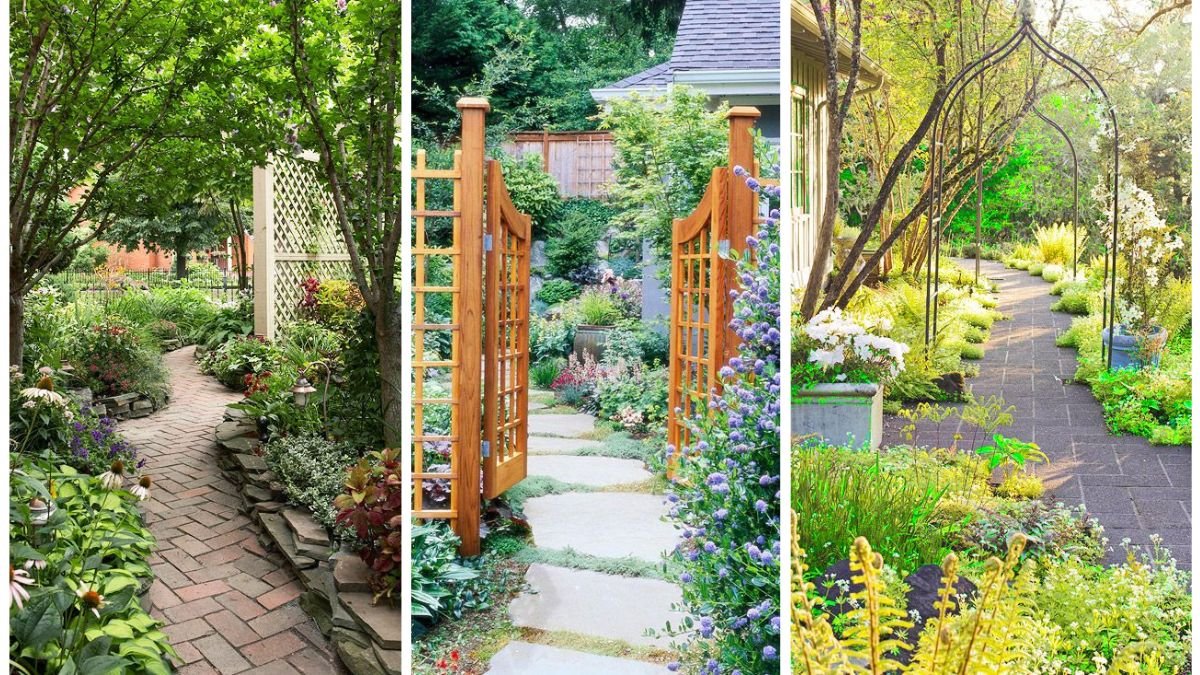Walkways are the arteries of any garden or outdoor space. They guide movement, create structure, and connect various zones, yet they are often overlooked in landscaping. Adding visually appealing borders to walkways not only enhances safety and functionality but also elevates the overall aesthetic of your garden. A thoughtfully designed border draws the eye, complements plantings, and highlights pathways, transforming ordinary walks into stunning experiences. This article explores creative border ideas that can turn any walkway into a captivating feature.
1. Flower Borders for Color and Seasonal Interest
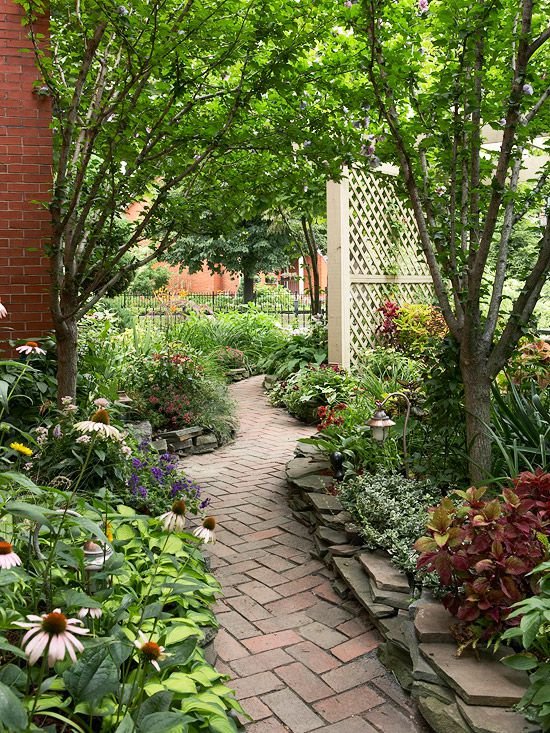
Flowers are a classic and versatile choice for walkway borders. They provide vibrant colors, seasonal variety, and a welcoming atmosphere for visitors.
Tips for Flower Borders
- Layering: Plant taller flowers like delphiniums or hollyhocks at the back and smaller blooms like marigolds or pansies in the front for depth.
- Color Harmony: Choose a cohesive color palette to unify the walkway. Complementary or analogous colors can create visual rhythm.
- Seasonal Rotation: Use perennials for year-round structure and annuals for seasonal bursts of color. For example, tulips in spring, coneflowers in summer, and asters in fall.
Popular Flower Choices
- Lavender: Adds fragrance, height, and subtle purple hues.
- Hostas: Broad foliage for texture and greenery.
- Pansies and Petunias: Ideal for low, colorful borders.
- Coneflowers (Echinacea): Provide long-lasting summer blooms.
Flower borders not only define walkways but also create an inviting, sensory-rich experience.
2. Evergreen and Shrub Borders for Year-Round Structure
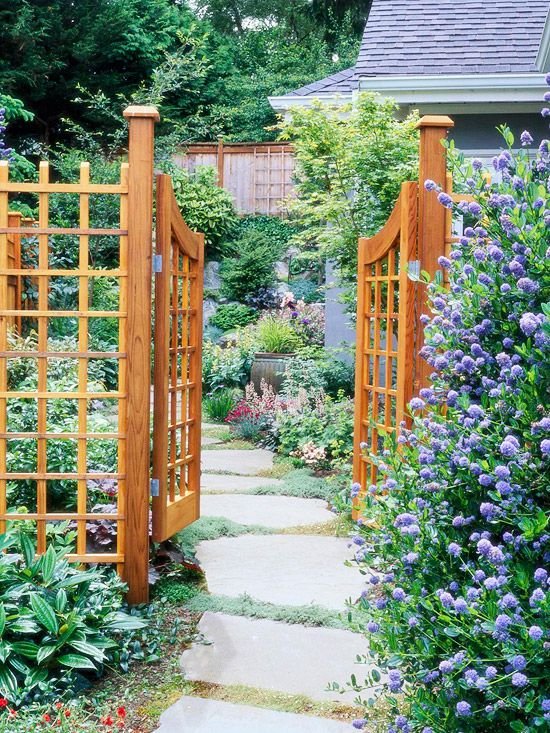
Evergreens and shrubs offer consistent structure and greenery, making them ideal for walkways that need a polished look throughout the year.
Design Strategies
- Height Variation: Use low-growing shrubs like boxwood or dwarf holly to border pathways, complemented by medium-height evergreens for layered depth.
- Formal vs. Informal: Boxwood hedges create formal symmetry, while junipers or yews can offer a natural, flowing appearance.
- Seasonal Highlights: Choose shrubs with berries, textured foliage, or variegated leaves to maintain visual interest even when flowers are absent.
Benefits
- Provides consistent borders year-round.
- Adds texture and depth to your garden.
- Reduces maintenance by limiting weed intrusion along walkways.
Evergreen and shrub borders offer a timeless, low-maintenance solution for defining walkways while maintaining elegance in all seasons.
3. Stone and Brick Borders for Classic Elegance
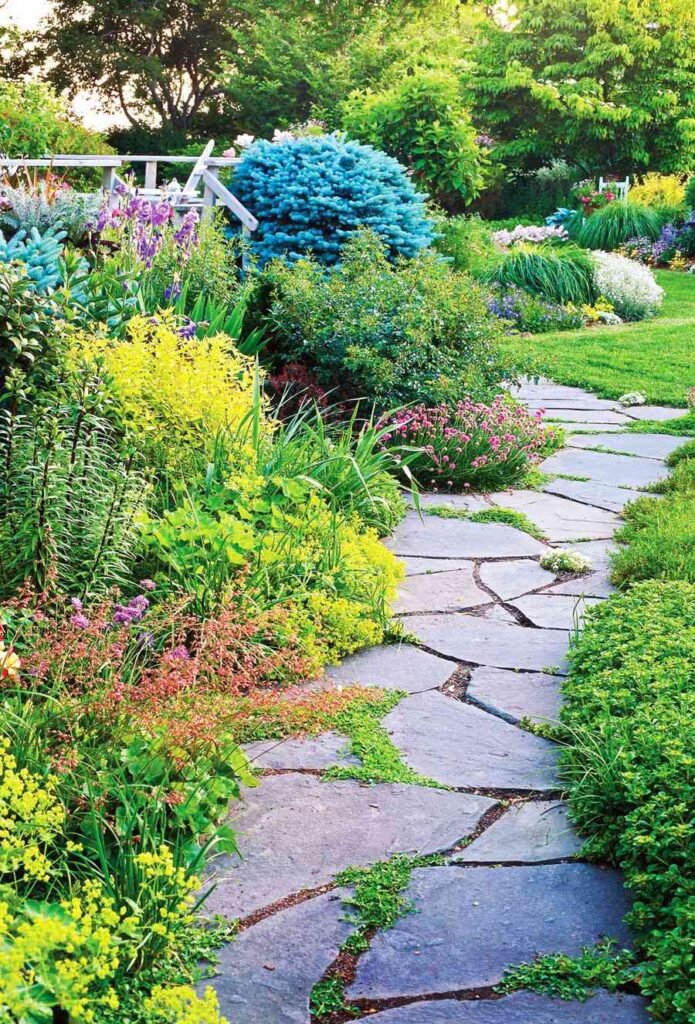
Hardscape borders like stone, brick, or pavers are durable, versatile, and visually striking. They define edges clearly while adding structure and sophistication.
Design Options
- Flagstone or Cobblestone: Works well with curved or formal pathways, creating a natural, textured look.
- Brick Edging: Provides a classic, clean finish that complements traditional and contemporary garden styles.
- Raised Borders: Slightly raised stone or brick edges can act as mini-retaining walls for flowers or mulch, creating a layered effect.
Tips for Installation
- Ensure proper leveling and anchoring to prevent shifting.
- Mix textures and colors for a natural, seamless look.
- Combine hardscape borders with plants for a softened, integrated aesthetic.
Stone and brick borders are both practical and decorative, offering durability while enhancing the walkway’s visual impact.
4. Mulch and Gravel Borders for Texture and Contrast
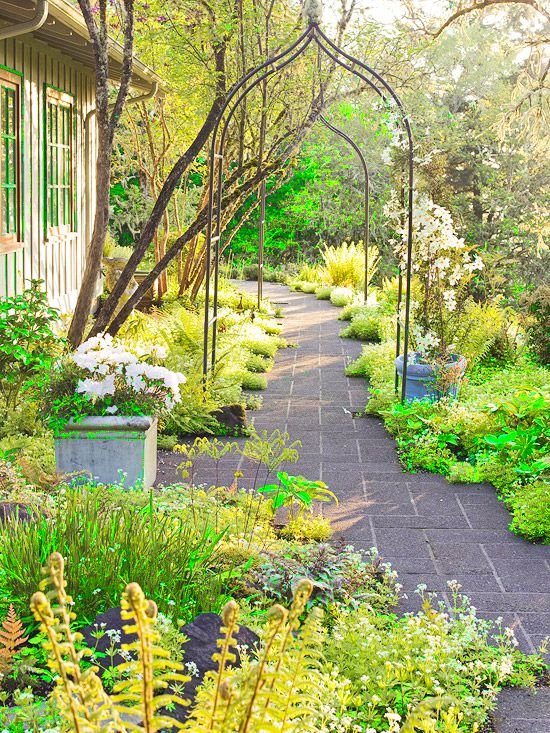
Mulch or gravel borders are flexible, affordable, and easy to maintain. They are particularly useful for informal gardens or areas where low-maintenance solutions are desired.
Implementation Tips
- Mulch Borders: Organic mulch such as bark or wood chips creates a natural, earthy look while suppressing weeds and retaining moisture.
- Gravel Borders: Small pebbles, crushed stone, or river rocks offer textural contrast and improve drainage along walkways.
- Combining with Plants: Edge gravel or mulch with low-growing flowers or ornamental grasses for a soft, layered look.
Benefits
- Enhances walkway definition without requiring permanent construction.
- Offers flexibility for curved or irregular paths.
- Low-maintenance and eco-friendly, especially when combined with drought-tolerant plants.
Mulch and gravel borders provide subtle elegance and functional benefits, enhancing both the look and longevity of walkways.

5. Creative and Thematic Borders
For a more personalized touch, consider creative borders that reflect your garden’s theme or your personal style.
Ideas for Thematic Borders
- Succulent Borders: Low-maintenance, drought-tolerant succulents like sedum or echeveria create geometric patterns and unique textures.
- Herb Borders: Plant fragrant herbs like rosemary, thyme, or sage along the edges to create both a sensory and functional walkway.
- Artistic Accents: Recycled materials, mosaic tiles, or decorative stepping stones can add artistic flair.
- Native Plant Borders: Use local plants to support biodiversity while creating a sustainable and visually harmonious border.
Benefits
- Adds personality and uniqueness to your garden.
- Encourages wildlife such as pollinators when using flowers or herbs.
- Enhances engagement and enjoyment of the walkway.
Creative borders allow you to combine beauty, function, and individuality, turning simple pathways into signature garden features.
Additional Tips for Stunning Walkway Borders
- Curved vs. Straight Edges: Curved borders soften the space and create a sense of flow, while straight lines emphasize structure and formality.
- Layered Borders: Combine hardscape, plants, and mulch for multidimensional borders that appeal to multiple senses.
- Maintenance Considerations: Choose plants and materials that suit your climate and garden maintenance routine to ensure lasting beauty.
- Height and Proportion: Keep border height proportionate to the walkway width. Low plants or short edging suit narrow paths, while taller plants or raised borders complement wider walkways.
- Focal Points: Incorporate focal points such as a garden bench, sculpture, or water feature to draw attention and enhance the walkway experience.
Thoughtful design ensures that borders not only enhance aesthetics but also improve functionality and accessibility.
Conclusion
Walkway borders are a small yet impactful element of garden design. From vibrant flower borders and year-round evergreens to durable stone edges, textured mulch, or creative thematic accents, there are endless ways to highlight pathways and elevate the overall garden experience. Well-designed borders guide the eye, create depth, and define spaces, transforming ordinary walks into immersive, visually pleasing journeys.
By combining materials, textures, heights, and colors thoughtfully, you can create walkway borders that are both functional and stunning. These borders not only enhance the beauty and cohesion of your garden but also add structure, safety, and a sense of refinement. Ultimately, the right border transforms pathways into focal points, making every stroll through your garden an enjoyable and memorable experience.
